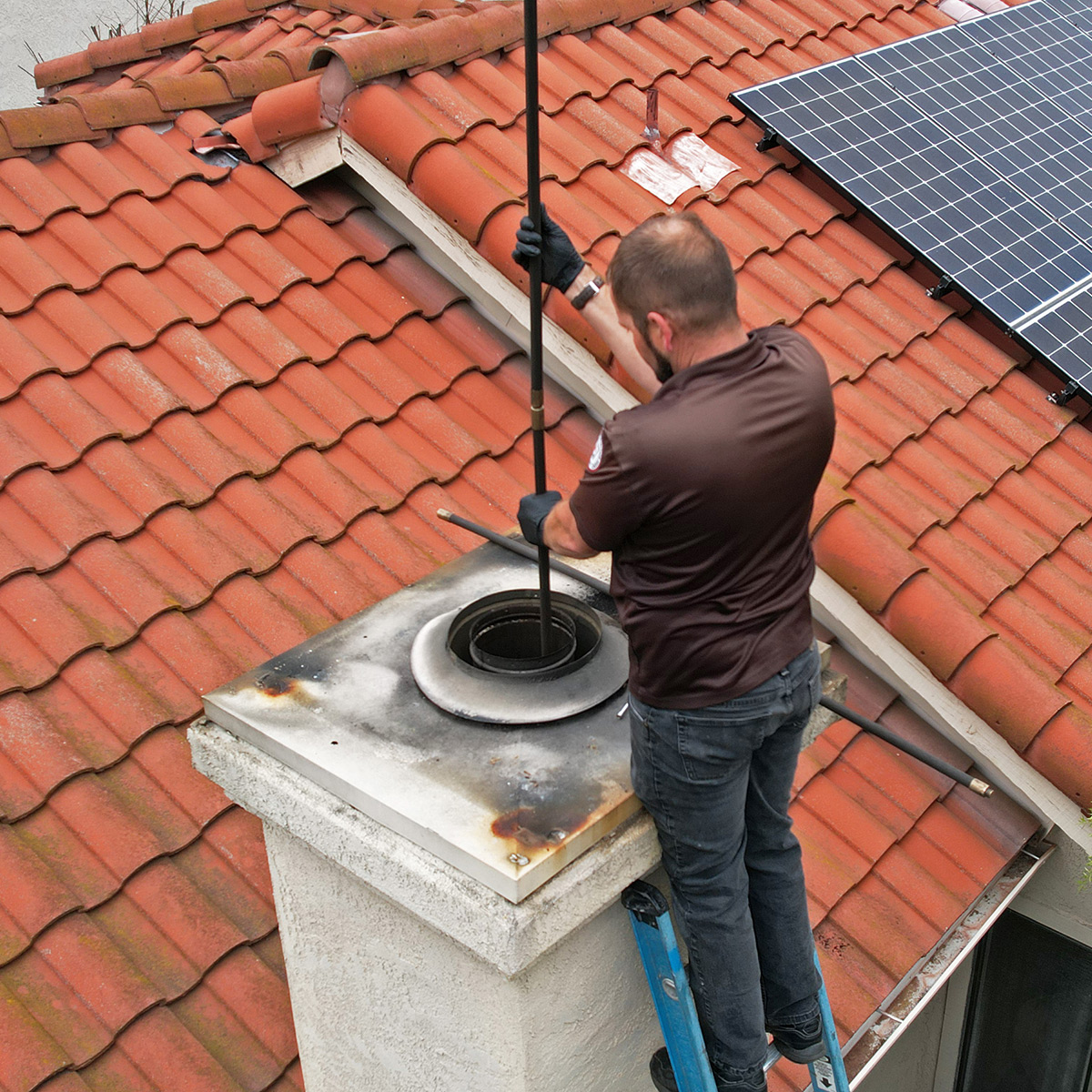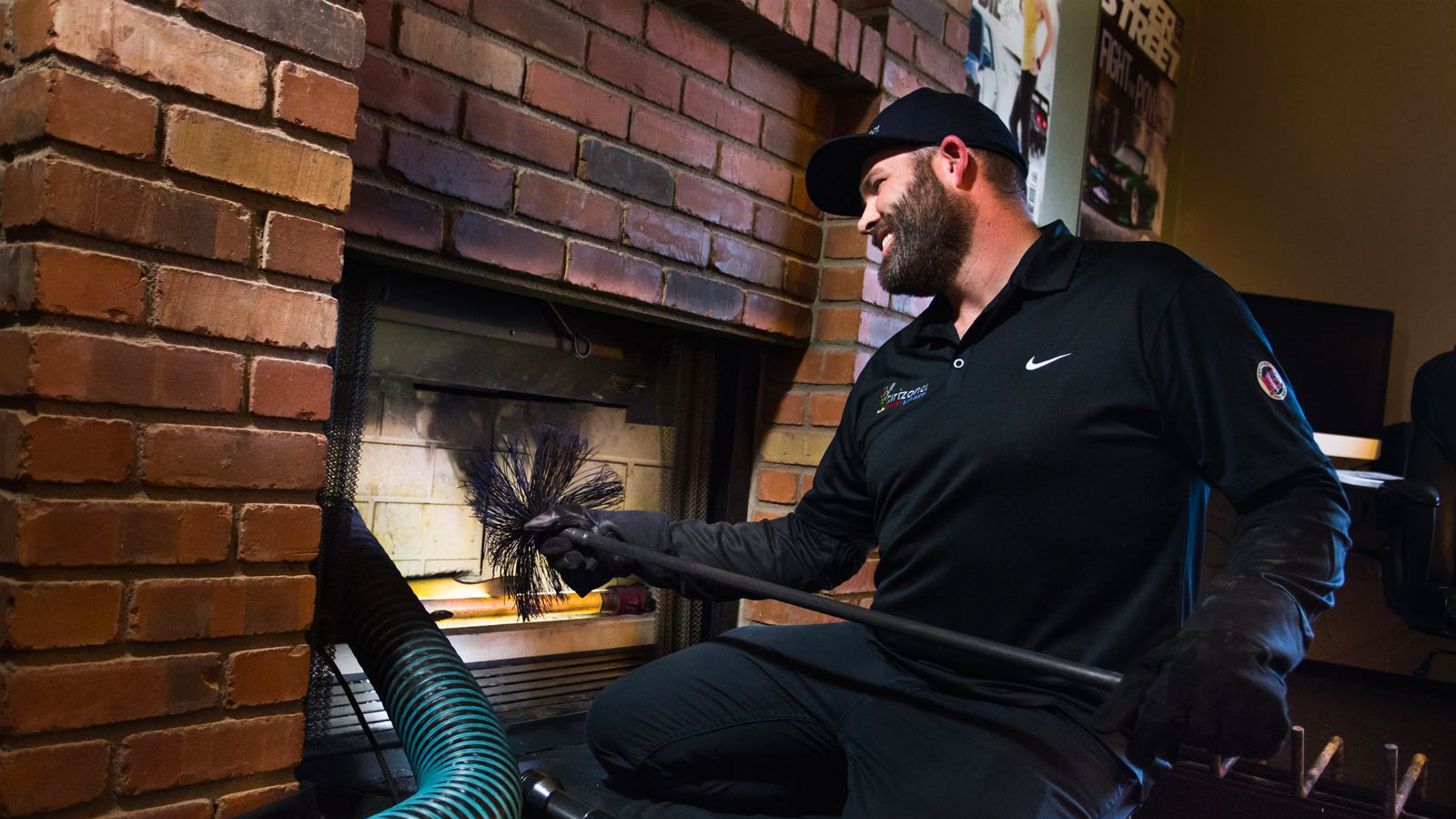Chimney Clean San Jose Providers: Your Trusted Partner for a Safer Home
Chimney Clean San Jose Providers: Your Trusted Partner for a Safer Home
Blog Article
Smokeshaft Cleansing: A Step-by-Step Guide to Keeping a Healthy Fire Place
Routine chimney cleaning is a necessary part of this upkeep regimen. By adhering to these guidelines, you will discover exactly how to gather the required devices, perform a visual examination, clear particles and accumulation, sweep the chimney, and finish the last actions for ongoing maintenance.
Gathering the Required Tools
To begin the process of smokeshaft cleansing, the very first step is to collect all the needed tools. Having the right tools available guarantees a effective and secure cleaning process. The necessary devices for smokeshaft cleansing consist of a smokeshaft brush, a ladder, decline towels or plastic sheets, a flashlight, handwear covers, and a dust mask.
The chimney brush is the primary device used to remove residue and creosote accumulation from the flue - Chimney Clean San Jose. It is essential to pick a brush that matches the dimension and shape of your chimney.
Decline fabrics or plastic sheets are critical for protecting the bordering area from dust and particles. They aid make and consist of the mess cleanup less complicated. A flashlight is crucial for checking the smokeshaft's interior for any kind of indicators of damage or blockages. Handwear covers are required to secure your hands from residue and other harmful compounds, while a dust mask aids prevent the inhalation of debris.
Executing an Aesthetic Examination

Making use of a flashlight, very carefully take a look at the interior walls of the chimney for any type of signs of damage, such as fractures, loosened blocks, or mortar deterioration. These issues can endanger the smokeshaft's architectural stability and present a severe security danger. Furthermore, look for any kind of signs of water damage, such as discoloration or efflorescence, as this can indicate a leaky smokeshaft cap or flashing.
Following, examine the chimney flue for any kind of obstructions. Look for the presence of nesting materials, leaves, or debris that may have built up gradually (Chimney Clean San Jose). These blockages can limit air movement, raise the danger of carbon monoxide build-up, and hinder the smokeshaft's ability to successfully vent smoke
Throughout the visual examination, pay close focus to the chimney crown, which is the top surface that safeguards the chimney from wetness. Seek fractures or missing out on items in the crown, as these can allow water to get in the chimney and create considerable damage.
Cleaning Debris and Accumulation
After finishing the aesthetic assessment, the next step in smokeshaft cleaning includes cleaning debris and build-up to make certain the appropriate functioning of the fire place. Over time, debris such as leaves, twigs, and pet nests can gather in the smokeshaft, obstructing the flow of air and creating potential fire hazards.
A chimney brush, specifically developed for this function, is utilized her explanation to eliminate loosened particles and creosote from the chimney wall surfaces. It is necessary to pick a brush that matches the dimension of your smokeshaft to guarantee effective cleansing.
To begin, put the brush into the chimney and relocate backwards and forwards, rubbing the walls to dislodge any particles or creosote. Utilize a sweeping motion to ensure thorough cleaning. It is advised to begin with all-time low and function your means up. As soon as the brushing is total, use a vacuum cleaner or a smokeshaft brush expansion to remove the dislodged debris from the fireplace.

Brushing Up the Smokeshaft
The sweeping of the chimney is an essential step in keeping a healthy fireplace. Gradually, residue, creosote, and various other particles can build up in the smokeshaft, blocking the flow of air and potentially causing a dangerous build-up of flammable products. Routine smokeshaft sweeping not just makes certain correct air flow however additionally avoids the danger of smokeshaft fires.
When it comes to smokeshaft sweeping, it is highly recommended to employ a professional smokeshaft move. These professionals have the understanding and tools necessary to securely and properly eliminate the collected particles from your smokeshaft.
It is essential to note that the frequency of smokeshaft sweeping depends upon a number of factors, such as the sort of fuel made use of, the amount of usage, and the sort of chimney. As a basic general rule, it is suggested to have your chimney swept and examined my response at least yearly.
Last Actions and Upkeep
To make certain ongoing maintenance and optimum efficiency, it is vital to apply routine upkeep methods and comply with a thorough collection of final actions for your fireplace. After finishing the chimney sweeping procedure, the primary step in the final upkeep is to examine the chimney cap and stimulate arrestor. These components prevent particles, pets, and rain from entering the chimney. Look for any kind of indicators of damages or clog, and clean or fix them if needed.

Evaluate the within the fire place for any indications of deterioration, such as fractures, loose bricks, or harmed mortar. These concerns can impact the structural honesty Read Full Report and safety and security of the fire place. Speak with a specialist smokeshaft move or mason to address them promptly. if any issues are found.
Lastly, take into consideration setting up carbon monoxide gas detectors near the fireplace and throughout your home. These devices can spot the presence of this unsafe gas, offering an early caution system in case of a chimney breakdown. Routinely inspect and change the batteries in these detectors to ensure their performance.
Final Thought
In conclusion, following a step-by-step guide for smokeshaft cleaning is essential in keeping a healthy fireplace. By gathering the required tools, executing an aesthetic examination, removing particles and accumulation, and sweeping the chimney, house owners can ensure the safety and efficiency of their fire place.
The important tools for chimney cleaning include a smokeshaft brush, a ladder, drop fabrics or plastic sheets, a flashlight, handwear covers, and a dirt mask.
A chimney brush, particularly developed for this purpose, is made use of to remove loose particles and creosote from the smokeshaft walls. Regular chimney brushing up not only ensures proper air flow but likewise prevents the risk of smokeshaft fires.
When it comes to chimney sweeping, it is very recommended to employ a professional chimney move. After finishing the chimney sweeping procedure, the very first step in the final maintenance is to examine the chimney cap and stimulate arrestor.
Report this page